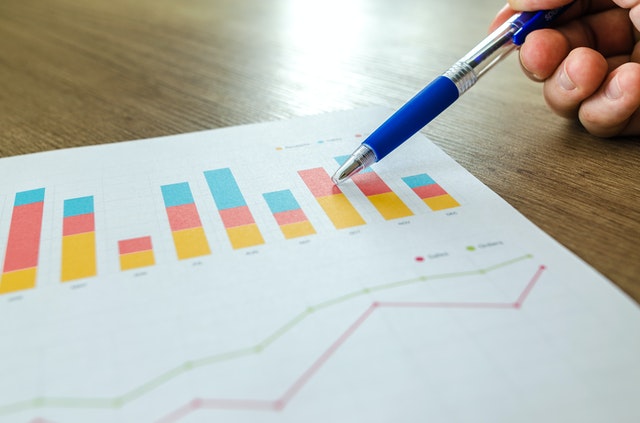Web analytics measure and analyse your website’s traffic, providing you with information about who is visiting your site, how they’re using it and – most importantly – how you can improve your website to generate more leads.
With so many types of analytics available and so many analytics tools to try, it can be overwhelming for businesses to decide on which area they need to focus on.
We recently wrote a guide to making the most out of your analytics.
Today, we’re looking at the different types of data you can track and how they can help you improve your business website.
Pageviews.
Pageviews are the total number of times a page on your site has been viewed.
Pageviews are counted by the number of times a page has been loaded. So, if a page has been refreshed, that counts as a new page view. Pageview counts can show you how popular each page is on your website. This is a great way to indicate which pages are bringing in more traffic to your website.
However, it’s important to note that pageviews don’t show how many users are looking at the page; it’s how many times the page has been viewed. And, while a page with a lot of pageviews could be popular, the data doesn’t tell you how many people viewing that page are converting – i.e. buying from you, signing up to something or making an enquiry.
Unique pageviews.
Unique pageviews are the number of times a page on your site has been viewed in a single session.
Unique pageviews differ from pageviews as this only counts the number of individuals landing on your page in one session. So, unlike pageviews, unique pageviews do not count page refreshes.
This can give you a more accurate insight into how many people are actually viewing your content.
Again, this is useful if you want to know how popular a specific area of your website is, but it’s also good to look at other analytics to see how optimised the page is for conversions.
Sessions.
Sessions are the user’s interactions on a site in one vision.
A session shows a user’s movement while on your website. This is an effective way to see how users are interacting with your content. Most analytic tools measure a session as 30 minutes, therefore if a user is browsing on your website for longer, a new session will start.
If a user is inactive on your site, after 30 minutes, the session will end. A new session will start if after that 30 minutes the user becomes active again, if it passes midnight or if a user leaves the website and returns from a different source (returns on a mobile device for example). Session times may slightly differ depending on which analytic tool you are using.
New visitors.
New visitors are the number of individual users who are visiting your site for the first time.
This term can also be referred to as a unique visitor and can help you determine how well you are attracting new visitors to your site.
A common way to track new visitors is via cookies placed in the user’s browser. Therefore, it’s important to consider that if a user returns on a different device or browser, they will be counted as a new visitor again.
Returning visitors.
Returning visitors are the number of users on your website who have visited before.
This is a good way to see how well you are retaining visitors. Similar to new visitors, returning visitors may not be counted if they are returning on a different device. Therefore, if you are tracking your returning visitors via cookies, please note that numbers may not be fully reliable, similarly with new visitors.
Traffic sources.
Traffic sources show you where your site visitors are coming from.
Different analytical tools will categorise and show your sources differently, however, this information is useful in showing you where your visitors are coming from. It can help you put more of a focus on areas that are bringing in less traffic or if you are paying for ads, that they are working properly or if you even need them at all.
Bounce rate.
Bounce rate is the percentage of visitors that leave your website after viewing only one page.
This information can help you determine which pages have a higher bounce rate. A high bounce rate could also indicate an issue with your site, for example, if your site loads slowly. You can view the bounce rate for your site as a whole or just by page.
How do I track web analytics?
Here are some tools you can use to track your web analytics:
If you found this guide to web analytics useful, you may also like:
Want some help understanding what your website analytics mean for your business? Give us a call today and we can help.


